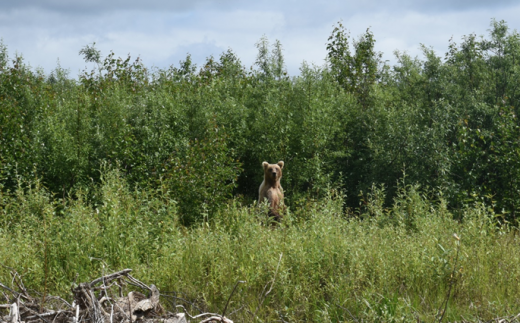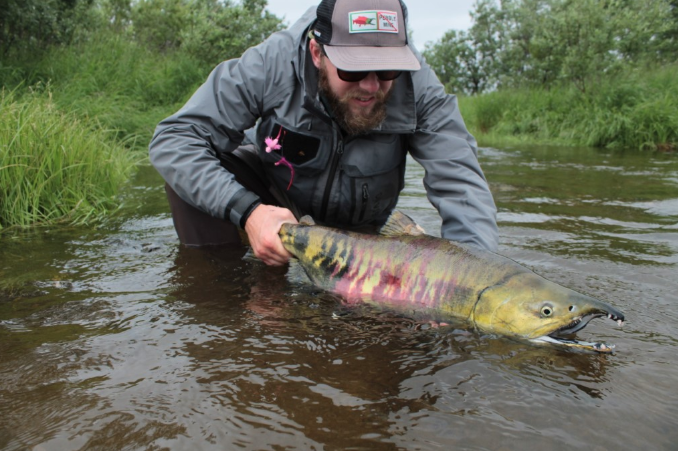Editor’s note: Building off the success of last year’s Native Odyssey campaign, Trout Unlimited is sending four of our brightest college club leaders in the TU Costa 5 Rivers Program to explore the home of the world’s largest runs of wild salmon: Alaska. These students will explore the Kenai Peninsula, Bristol Bay and the Tongass National Forest in pursuit of the five species of Pacific salmon and other native salmonids that call Alaska home. In partnership with Costa Sunglasses, Simms Fishing Products, the U.S. Forest Service, Fishpond USA, and Orvis, these students will seek to unearth, document, and share the challenges facing the largest salmon fisheries in the world.
As I watched our floatplane take off from an unnamed pond in Bristol Bay, near the site for the proposed pebble mine, I had a hard time seeing how this vast tundra could be a haven for spawning salmon. After making five trips with our gear over the rocky half-mile portage to the mouth of the river, I started to understand how undisturbed this wilderness is.
There are no roads or even trails that lead here; the Koktuli River must be accessed by float plane. The rough landscape and trying wilderness keep the use to a minimum, which helps to support the healthy runs of spawning salmon. Bristol Bay hosts the world’s largest sockeye salmon fishery. Alaska is not only the last frontier, but it is one of the last places on earth where wild salmon can truly thrive. When the salmon thrive, so do the people and economies of Bristol Bay. Wild-caught salmon bring in an annual $1.5 billion to the economy and provide over 14,000 jobs to the Bristol Bay region.
If protected and managed carefully, this sustainable fishery will continue to bring prosperity to the people and communities of Alaska. In addition to the commercial fishing industry, Alaskan salmon runs also support a booming sportfishing industry. Anglers from all over the world travel to Alaskan rivers for the chance to bring a wild Pacific salmon to the net.
The members of the TU Costa Five Rivers Native Odyssey crew were fortunate enough to wrangle with all three species of salmon that spawn in the Koktuli River. In addition to catching chum, king, and sockeye salmon on the fly, we also caught some feisty rainbow trout, Dolly Varden and grayling that feast on salmon eggs and fry during the spawning runs. After spending a few days on the Koktuli, we began to comprehend how the Bristol Bay ecosystem is deeply rooted in salmon.

These mighty fish journey hundreds of miles to return to their streams in which they were born to spawn. After they spawn, the salmon start to decompose, effectively transporting the nutrients from their time in the ocean back to the inland plants and animals. Every gravel bar on which we stopped was lined with bear and moose tracks. We saw one boar grizzly that was probably scouring the bank for rotting salmon carcasses when we interrupted his search for dinner.
Our guide for the Koktuli float, Chuck Ash, knows the sport fishing industry in Bristol Bay inside and out. He has formed strong connections in the guiding community, and is someone who sees the value in connecting his clients to such a unique wilderness. Chuck retired from guiding a year ago, but his passion for this ecosystem and the fish that support it shows through his actions and drive to protect this Alaskan gem.
Although our time on the Koktuli was brief, we walked away with a powerful understanding of the salmon and their deep cultural and ecological connection to Bristol Bay.
—Libby Glaser



